| |
Did You Know?
Where did the Oil-Fed (pressure) Chain Tensioner Come From?
June 17, 2011
Did You Know?
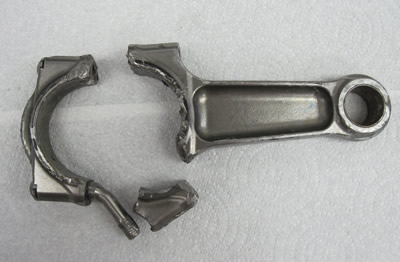
Could the pressure-fed tensioners cause this?
|
Did You Know?
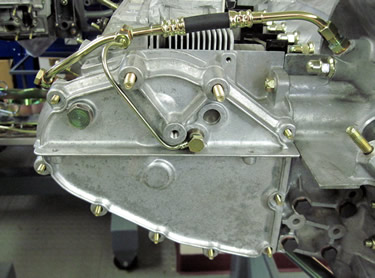
So this is the first engine (1979 Turbo Carrera) that I have ever reinstalled them on.
|
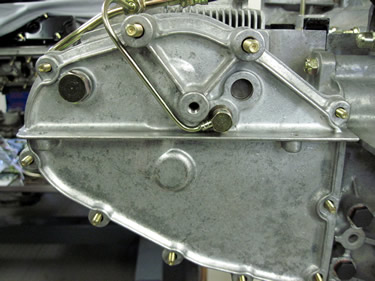
The engine came with them so I will go with the flow this time. The car is being restored to an original '79 Turbo Carrera... except for the oil-fed chain tensioners of course!
|
Did You Know?
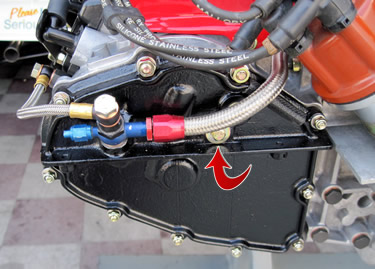
The tensioners began life in a 962, believe it or not. At Daytona, 1985, 962's had the new super trick chain tensioners installed, but there were problems that nobody seemed to be able to solve. For example, some engine failures. Now, the Swap Shop 962 had no problems and actually won the race with three 962's to follow. You wouldn't think there was a problem, but there was!
|
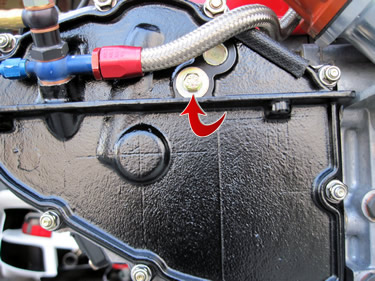
Note the arrow pointing to the bolt and washer holding an aluminum plug where the oil feed would be popping through the cover. We got a recall in 1985, after Daytona, that the engines needed to have an update.... Go back to the original 930 Turbo chain tensioners.
|
Did You Know?
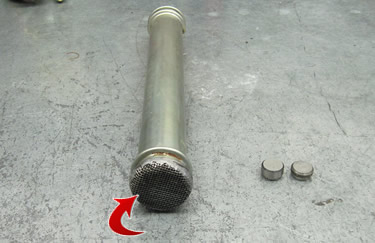
During the engine failures, it was discovered that the valve pills (Lash Caps) were getting loose from the valve and finding their way through the oil return tube and bouncing around in the bottom of the motor until they connected with something and caused "HAVOC"! So what the Porsche engineers decided was to put screen on the bottom of the oil return tubes so the pills won't get in the way of moving parts. This was the first band-aid.
|
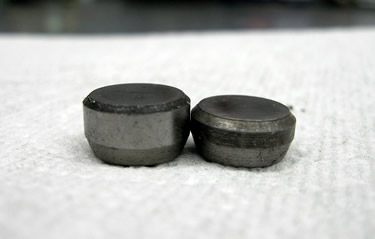
The second problem was the valve pills must be coming off because the shoulder was not long enough and it sat on the valve end. The second band-aid was that the engineers designed a longer shoulder so the pill couldn't find its way off. How could there be enough clearance between the rocker and the end of the valve that the pill could come off? It's easy, the reason all this happened was because the new tensioner couldn't keep the pressure. The tensioner piston wouldn't always have tension on the chain idler. When the motor was revved to 8200 RPM and then instantly idled back to 4500 RPM (during up shift or downshift) the chain would get slack, thus causing the timing to retard, making the valve hit the piston. In some cases just a tap, but the tap represented a bent valve. This made the valve not return completely and the valve pill (through RPM vibration) would fall off the end of the valve. The valve pill would find it's way to the oil return tube, roll down to the inside of the engine, and in some cases cause a major catastrophe. As A.J. Foyt once said, "She ran good, 'till she blowed.".
|
The End Result (sometimes)

The rod in this photo is a result of the valve hitting the piston (in this case really hard) from a major over rev. The rod was bent during the first 500 revolutions and took the rod bearing out. The friction was too great which seized the rod on the crank shaft (just for a moment) and the rod let go. The rod cap took out the oil pump. The oil pump seized and broke the countershaft drive end... and so on.
|
The good news is that the pressure fed chain tensioners are great for a street car and in most cases okay for the club racers too. The 962 engine didn't fare so well because of the aggression of the driver vs. the engine. With the invent of the tall lash cap you could actually over rev the engine (missing a shift) in a small way, the valve pill would stay on the end of the valve and after a few more million revolutions the valve would straighten itself out and in most cases still finish the race. I've seen many turbo Porsche racing engines that have "smiles" in the valve pockets from the valve hitting the piston and have won races. Okay, maybe the leak test is a little high, but the dependability of the great air-cooled engine proves itself time and again. For all you Porsche engine builders that didn't know any of this, keep building the engines the way you do, this doesn't mean you're going to have a failure because of what I've just explained! This happened to engines that were making an excess of 700 horsepower and racing 12-24 hours.
<<Previous / Index>>
|
|
|
|

